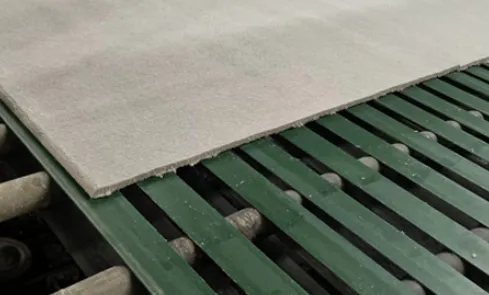- Afrikaans
- Albanian
- Amharic
- Arabic
- Armenian
- Azerbaijani
- Basque
- Belarusian
- Bengali
- Bosnian
- Bulgarian
- Catalan
- Cebuano
- Corsican
- Croatian
- Czech
- Danish
- Dutch
- English
- Esperanto
- Estonian
- French
- German
- Greek
- Hindi
- Indonesian
- irish
- Italian
- Japanese
- Korean
- Lao
- Malay
- Myanmar
- Norwegian
- Norwegian
- Polish
- Portuguese
- Romanian
- Russian
- Serbian
- Spanish
- Swedish
- Thai
- Turkish
- Ukrainian
- Uzbek
- Vietnamese
Nën . 07, 2024 19:25 Back to list
Choosing the Right Sizes for Ceiling Hatches in Various Applications
Understanding Ceiling Hatch Sizes A Comprehensive Guide
Ceiling hatches are essential elements in interior design and construction, providing access to vital spaces such as attics, rooftops, or mechanical areas. When planning a construction project or a renovation, choosing the right size for a ceiling hatch is crucial for both functionality and aesthetics. This article explores the various dimensions available for ceiling hatches, their implications, and considerations to enhance usability and safety.
Importance of Ceiling Hatch Sizes
The size of a ceiling hatch is often dictated by its intended use. For example, a hatch accessing an attic primarily for storage might need to be larger than one leading to a mechanical systems area. The standard sizes of ceiling hatches typically range from 24 inches by 24 inches to 36 inches by 36 inches or larger, depending on the specific requirements of the space and building codes.
Selecting the appropriate size is key to ensuring easy access. A hatch that is too small can create challenges when moving equipment or materials in and out, whereas an excessively large hatch may compromise the structural integrity of the ceiling and lead to unnecessary costs.
Standard Dimensions
When selecting a ceiling hatch, it's important to consider the standard dimensions available in the market. Typical sizes include
- 24” x 24” Commonly used for storage access in residential buildings, providing adequate space for most users. - 30” x 30” A slightly larger option that offers more room for equipment or for accessing attic spaces. - 36” x 36” Often used for commercial applications or where larger equipment needs to be maneuvered.
In addition to these standard sizes, manufacturers often offer custom sizes to meet unique architectural needs. This can be particularly important in older buildings where existing structures may not conform to modern standards.
Material Considerations
ceiling hatch sizes

Ceiling hatches are constructed from various materials, including metal, wood, and plastic composites. The choice of material can affect the hatch size and overall functionality. Metal hatches, for instance, are typically sturdier and might come in larger sizes but can be heavier and more expensive. Wooden hatches, while lighter and potentially more cost-effective, may not be as durable in high-temperature or high-moisture environments.
Building Codes and Regulations
When choosing a ceiling hatch, it is crucial to consider local building codes and regulations. These codes often dictate minimum dimensions for accessibility, particularly in commercial buildings, where compliance with the Americans with Disabilities Act (ADA) may be required. Ensuring that the chosen hatch meets these regulations is vital to avoid costly modifications down the line.
Safety Features
Safety should be a top priority when selecting a ceiling hatch. Larger hatches may require additional safety features, such as weight-bearing supports or safety rails, while smaller hatches might have simpler mechanisms for open and close operations. Many modern ceiling hatches come equipped with spring-loaded or pneumatic lifts to facilitate easier access, minimizing the risk of injury.
Installation Considerations
Proper installation is just as important as size when it comes to ceiling hatches. A poorly installed hatch can lead to issues such as air and moisture leaks. Engaging a professional contractor familiar with local codes and best practices is advisable to ensure the hatch operates effectively and safely.
Conclusion
In conclusion, selecting the appropriate ceiling hatch size requires careful consideration of various factors such as intended use, standard dimensions, materials, building codes, and safety features. Taking the time to assess these elements will lead to functional, safe, and aesthetically pleasing access solutions in both residential and commercial environments. Whether it is for routine maintenance or storage access, the right ceiling hatch can enhance the overall utility and design of a building space. Ultimately, a well-chosen and properly installed ceiling hatch can offer years of reliable service, ensuring optimal access whenever it is needed.
-
Transform Interiors with PVC Gypsum Ceiling: A Stylish, Durable, and Moisture-Resistant SolutionNewsMay.19,2025
-
The Smart Interior Upgrade: Discover the Durability and Versatility of Gypsum Ceiling Access Panel SolutionsNewsMay.19,2025
-
The Smart Choice for Interior Design: Discover the Value of PVC Gypsum Ceiling SolutionsNewsMay.19,2025
-
Mineral Fiber Ceiling Tiles: The Smart Blend of Performance and AestheticsNewsMay.19,2025
-
Mineral Fiber Ceiling Tiles: The Superior Choice Over Gypsum for Sound and Fire SafetyNewsMay.19,2025
-
Mineral Fiber Ceiling Tiles: Eco-Friendly Strength and Style for Every CeilingNewsMay.19,2025







